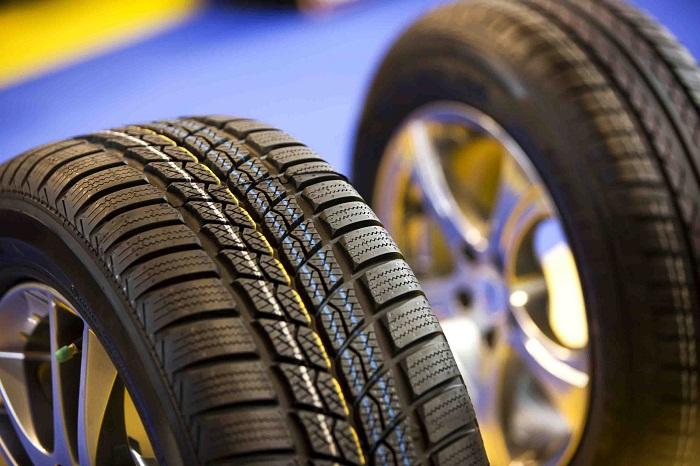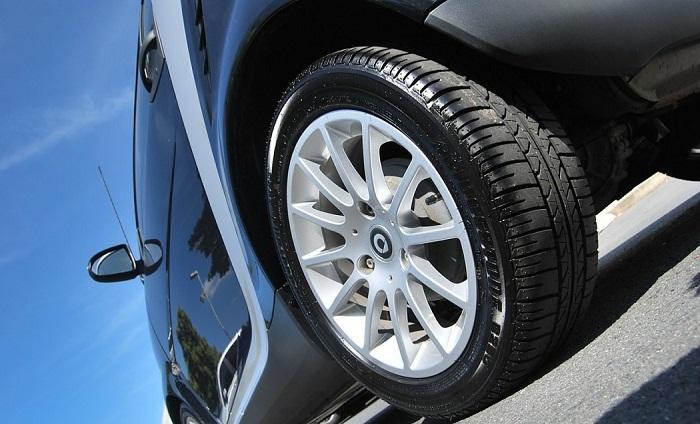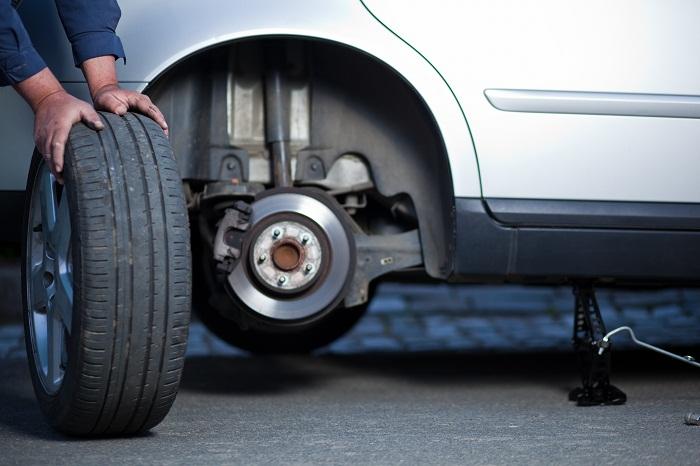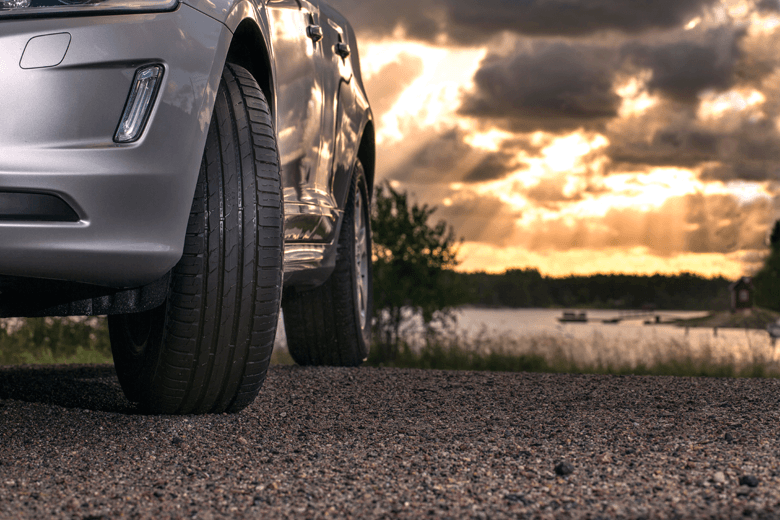Proper maintenance of your vehicle not only extends its lifespan but also saves you a lump sum on repair and servicing costs. An effective way to extend your car’s longevity is to keep the tires in good condition. However, it’s wise to replace worn-out ones with new tires because good tires ensure the vehicle’s safety, provide better traction, and give a better driving experience.
Many people are reluctant to buy new tires to save money, but the cost is minimal if compared to the many benefits they provide. Check out 5 unique advantages of buying new tires:
Contents
5 Benefits Of Buying New Tires
Ensure better safety
If you drive a lot or often go on road trips with your loved ones, safety is the feature that you should pay your attention first. Depending on the tire quality and the condition of the roads you are driving on, new tires will keep you and your passengers safe for the next 65,000 to 100,000 miles of driving.
You can buy brand new good-quality tires for around $400-$500. Take good care of them, and they will serve you for a couple of years.

Photo Credit: Coho Auto Repair
Give better traction
New tires make it easier to stop, go, and turn your vehicle. They have better tread patterns that help them have a better grip on the road surface. So, whether dirt, mud, snow, or water on the road, a set of new tires will save your car from slides and skids.
Provide better gas mileage
Old tires have uneven tread patterns that require the driver to put more effort into moving and turning the car, which directly affects the gas mileage. By replacing them with new ones, you can reduce the fuel usage of your vehicle. However, to ensure maximum fuel efficiency and to prevent premature wear and tear, ask the mechanics to mount, align, balance, and inflate them properly.

Photo Credit: Proctor Cars Magazine
Deliver better performance on the road
Worn-out tires have little or no tread left on them. As a result, you have to work harder and your car needs to push more power to the ground to brake or take any turn. Besides, they also make it difficult to stop the car quickly in time of emergency, which may lead to accidents. So, buy new tires to get better performance from your vehicle.
Comfortable drive
New tires offer better grip on the road, making driving a smooth and comfortable experience. Besides, they generate less noise if compared to worn-out tires. So, buying new tires can give you a really quiet, smooth, and comfortable drive, especially when you are taking long highway trips.

Photo Credit: K & G Tire Pros
When Should You Buy New Tires?
You should replace the tires if they look worn out or are showing metal. According to many auto manufacturers, drivers should change tires after about 60,000 – 100,000km. However, some types of tires allow users to travel up to 130,000km or only 50,000km. When this limit is reached, the car owner needs to replace new tires to improve the vehicle’s performance.
Drivers should also pay attention to tire lifespan. Accordingly, car owners should replace tires after 5 or 6 years to ensure safety as well as optimize vehicle performance. In case after 5 years the tire is still in normal condition, drivers can continue using it. However, users need to make sure to check tires at least once a year. When the tire’s lifespan has reached the 10-year mark, you are required to replace it. This applies to the spare tire as well.
Additionally, you can contact an auto repair shop to find out how much tread life is left in them. The mechanics of the shop can also give you valuable suggestions regarding your new tire purchase.
How to choose the right tires for your car:
How To Maintain Car Tires To Last Longer?
Drivers should regularly check tire pressure, and avoid over-inflated or under-inflated. Because this leads to uneven contact between the road surface and the tire. Specifically:
- Tire pressure is low causing the tire sidewall to come into contact with the road, and the consequence is that your car will consume more fuel, be less flexible, etc. According to calculations, the tire is 20% less than the standard amount of air will reduce lifespan by 30%.
- Over-inflated tires cause the middle part to wear out quickly, increasing the risk of explosion, and reducing traction or shock-absorbing ability… A tire with more than 30% excess air compared to the standard amount of air will reduce its lifespan by 45%…
Normally, the standard tire pressures for small and mid-sized sedans/hatchbacks are about 30 – 40 Psi, and for SUVs/crossovers/MPVs about 45 Psi. To know the exact tire pressure, vehicle owners can look at the driver’s door frame, the vehicle owner’s manual, or the tire sidewall.
In addition, drivers should avoid driving too fast, braking suddenly, and comply with load regulations. This ensures the tire’s friction force with the road surface at a sufficient level, contributing to smooth operation and improving the tire lifespan.
Proper tire patching can prevent the penetration of external agents such as water, dirt, mud… causing rust and oxidation. This is a method that saves costs and at the same time ensures safety when driving.
Lastly, drivers should give their cars periodic inspections and maintenance. This helps car owners detect damage early and replace tires timely. Accordingly, tires are often maintained with items including dynamic balancing, wheel angle alignment, tire rotation…
It’s undeniable that the tires play an integral part in your car so buying new tires is a very necessary thing when your car reaches a certain mileage or you notice the symptoms of punctures or cuts on the tire surface.




My wife and I have realized lately that our car may need new tires. I have felt some rumbling in the last few weeks. I didn’t realize that new tires can actually help cars get better fuel economy. That’s something that we can definitely look forward to.
Thank u for your comment
I never knew that they have better tread patterns that help them having a better grip on the road surface. Last night, while coming home from my daughter play, I noticed that while turning corners we drifted a little. We fishtailed a little as well. I would imagine getting great tires could help keep me and my kid safe!
We are happy to receive your comments. Please share with your friends so they can enjoy this article, too.
I liked that you had mentioned that buying new tires can help your car perform better on the road to help avoid any possible problems while on the road. The tires on my wife’s car have been worn down for awhile now and I’m thinking of getting her new tires to avoid any possible problems that could be caused by the tires. I’ll have to start looking around for tire stores that can help me find the right tires so that I can feel comfortable having my wife drive around again.
Thank you for your comment. Find this article useful? Please share exciting updates with your friends and they will love it!
Although the cost of new tires is more as compared to that of used tires, still I think the price of a new set of tires is very little as compared to the advantages and satisfaction they bring. No doubt, a tire is the only element of an automobile that makes contact with the road surface. That is the reason why a car owner should keep the track of its shape routinely and replace them correspondingly. Yes, one can replace his worn tires with used tires. But from my opinion, it is better to replace old shabby tires with new tires. Because if we use new tires, then we don’t need to change it for a considerable period of time. In addition to that, it improves traction on the road, fuel efficiency, safety and overall functionality of the vehicle. Thus, one should think twice before going to use second-hand tires.
It’s not a reply passé but a question,what are the signs that the car mounting system could be damaged?
I have been wondering if it would be worth it to get some new, name brand tires when I get them replaced. So I appreciate you pointing out that they will give my vehicle a better performance since the tread will be clear and will be able to brake easily. I will definitely have to go for some new, name brand tires in a few months when I replace mine so that they can help my car perform well.
I didn’t know that worn down tires make more noise than new ones. It must be really important to take semi trucks in regularly than for a tire service because of the many wheels that they have on. Keeping a semi driving smoothly and as quietly as possible would be important for the driver probably, as well as those driving around him.
What a bunch of great information. Thanks for taking your time to sharing this.
I do agree with the fact that driving with new tire is more safer. Properly inflated tire with better tread depth produces better traction on the road surface and also has positive effects on the fuel economy of the vehicle. So, tire pressure and tread depth needs to be inspected at a regular interval. If the tread depth is lower than average, then it should be replaced immediately according to the manufacturer’s recommendation.
I find it great that you mention that one way of keeping a car running for longer is to take care of its tires. My favorite tip is choosing the right tires that give the best traction for any type of road: concrete, mud, sand, snow, or asphalt. If I needed a new set of tires, I will first find a good auto parts dealer. That way, not only will the car be able to drive through anything but be able to keep me (as the driver) and the passengers safe as well.
It makes sense how you said that new tires have a better grip on the road. My wife and I have noticed that our car could use a little more traction. We’ll have to look for a good tire shop that can help us to find the right kind of tire to use that would best fit our car.
I like how the article explains that getting new tires can help you get better gas mileage as it will require less effort from the car to move and turn the vehicle. My car’s gas mileage hasn’t been doing as well as it normally does and it might be because my tires are old. Maybe replacing my tires can help make my gas mileage go back up.
I like how you said that newer tires mean better gas mileage for your car. My husband’s car tires should probably be replaced soon. He will be happy to know if he does that he might increase his gas mileage.